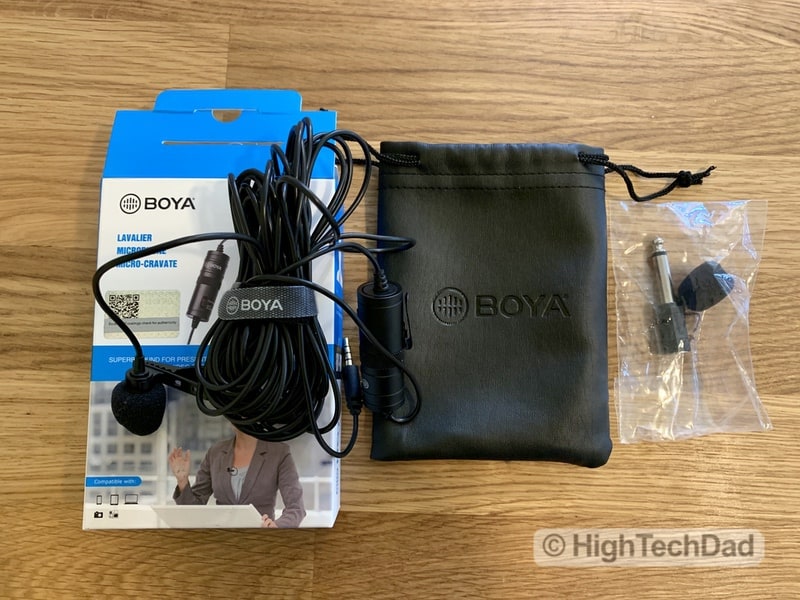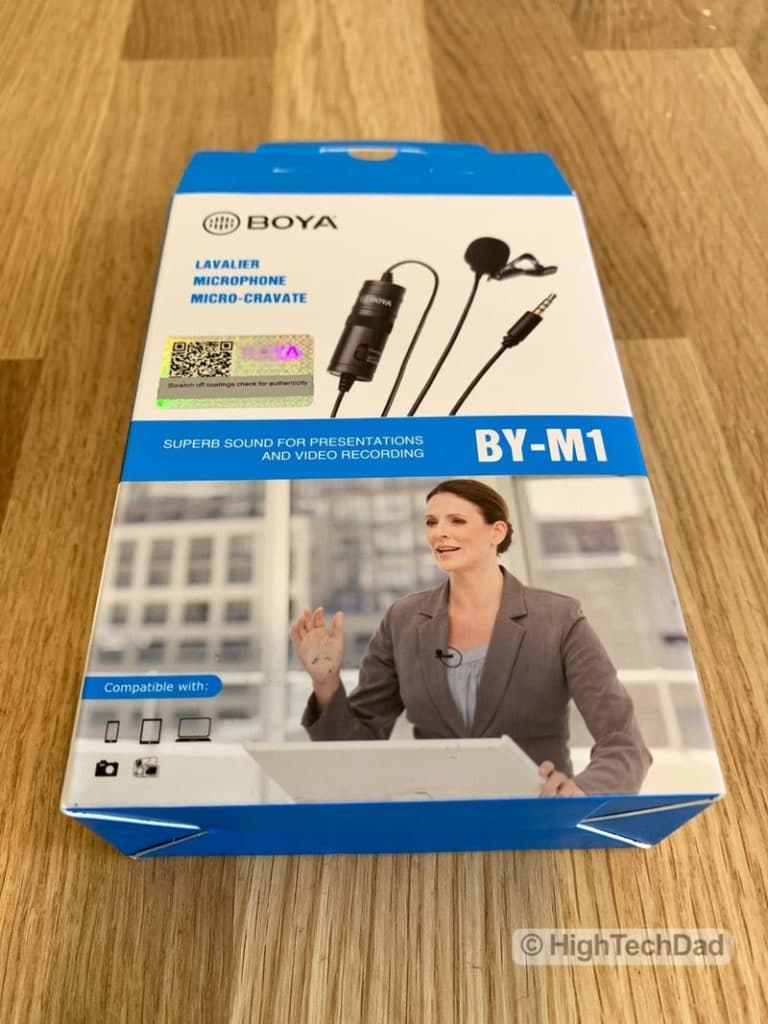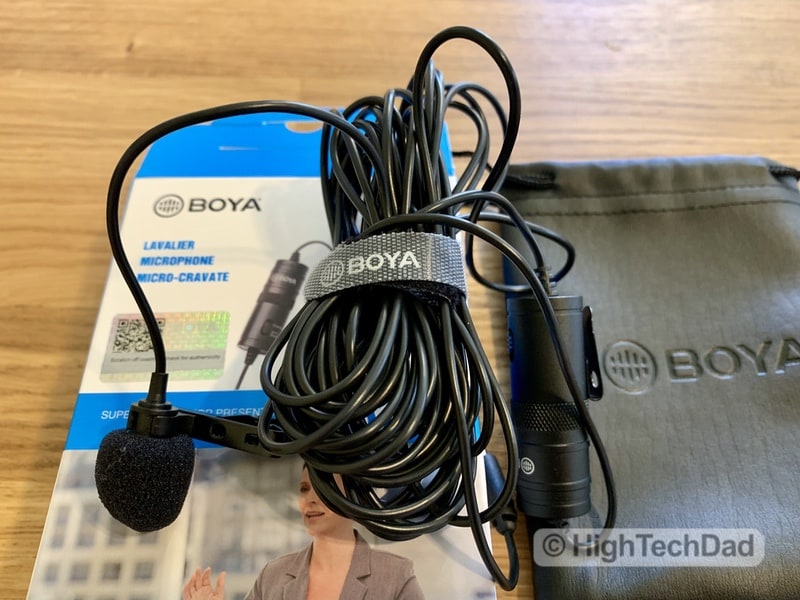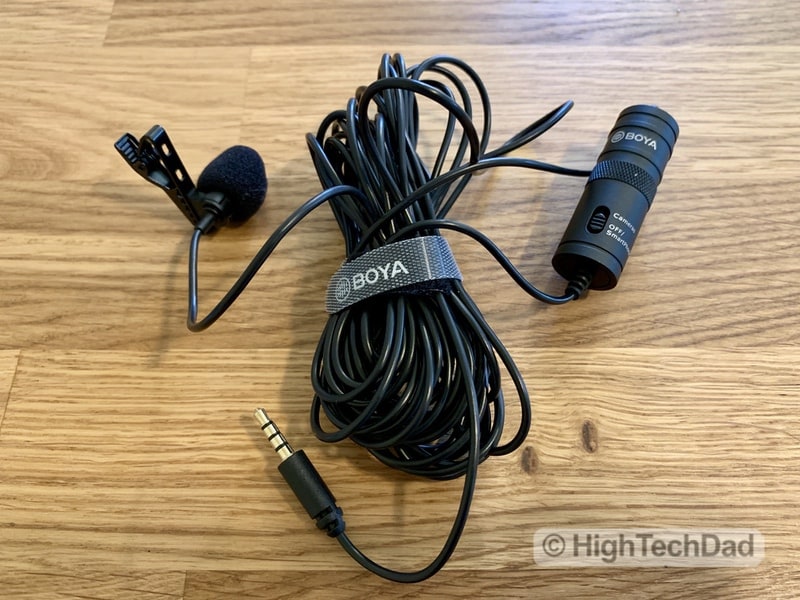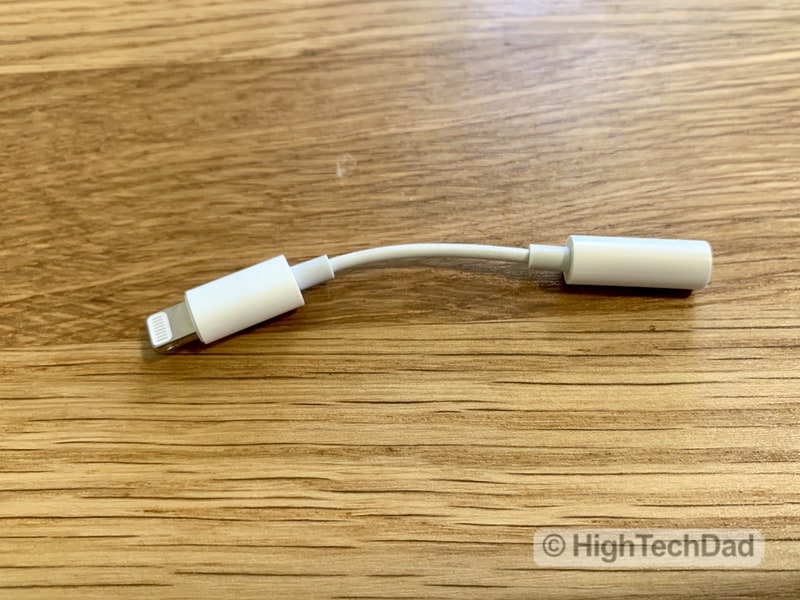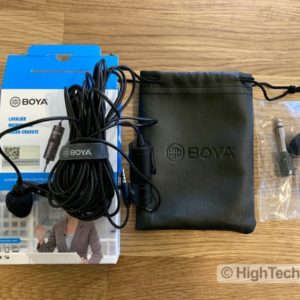I launched my YouTube channel back in 2008 and have produced over 200 videos on and off over the years. But there was one piece of equipment I didn’t use in pretty much all of my video until now…a microphone. As audio is a critical part of the equation when producing videos, I decided to “invest” in an external mic, and chose the budget-conscious BOYA BY-M1 lavalier lapel mic as my first test in upping my audio game.
For my video recordings, I tended to use either the on-board mic of my iPhone or the mic built into the camcorder (or other recording device). I had never really considered an external mic, until I started diving in deeper into building up my YouTube presence. Sure, I have lots of videos of all types of content – gadget & product reviews, how-to & fix-it videos, and car reviews — but in pretty much each video, I don’t use a mic.
This is all changing. And it starts with the video review below.
VIDEO: Mini Review of the BOYA BY-M1 Lavalier Mic
So why would you want to have a microphone? Well, the video review below that I did gives you a few reasons. For starters, if you are filming outside, there are lots of other sounds often going on. In my video, there was a leaf blower and a lawnmower as well as some wind.
But also, if you are not right on top of your video device, you end up yelling towards it so that the mic picks it up, or, you videos just don’t have much volume to the voice in general.
Having a more conversational tone is more preferred that screaming like a reporter in a hurricane. There is a time and place for that.
My video review shows two scenarios: indoor and outdoor filming. In all of my tests, I used my iPhone XS Max as the video camera and either used the iPhone’s on-board mic or the BOYA BY-M1 cavalier mic.
And, the only editing I did of the audio was to actually lower the levels a bit on the recordings using the BOYA BY-M1 as it recorded a bit too well.
This whole “microphone” thing is new to me. I’m sure with practice, I will find the best placement and levels to record my videos at. And, hopefully, I will expand my set of tools to include a boom or shotgun mic and wireless lavalier set.
What’s So Great About the BOYA BY-M1?
So, why did I choose the BOYA BY-M1 lavalier mic as my first mic? Well for starters, I did some research on inexpensive/budget microphones (I didn’t want to say “cheap” here because that has the wrong connotation but could have been accurate if I made the wrong choice), and the BOYA BY-M1 mic seemed to come up frequently.
Here are the top three reasons why I like the BOYA BY-M1 as a budget mic for videos:
- It’s inexpensive – I got the BY-M1 for about $20
- It’s long – it’s got a 20 foot cord so you have some flexibility about how far apart you and the camera are
- It’s versatile – it can work with DSLR/camcorder or with smartphones like the iPhone
I’ve already mentioned the price. For a starter lavalier, clip-on mic, you really can’t go wrong with the price. There are many, many more expensive corded lavalier mics that have higher quality sound, but if you want entry-level quality, this is the way to go. (Wireless lavaliers get even more expensive.)
And why is a long cord important? Well, if you get too short of a cord, you are essentially tied to your camera. A short cord may be ok if you always do closeups, but with the flexibility of having 20 feet of cord, you have a wider range, literally, of shots.
The BOYA BY-M1 is also quite versatile. If you use a DSLR or camcorder that has a mic-input port, the BY-M1 will work. Alternatively, if you use a smartphone like an iPhone, with just a flip of a switch, it works with smartphones.
The switch simply toggles between powered (for camcorders/DSLRs) and unpowered mode (for smartphones). Included with the package is an LR44 (coin) battery. I have not tested the battery duration as I use the BOYA in the smartphone mode which does’t require batteries.
A quick note: if you are going to be using the BOYA mic with an iPhone that does NOT have a headphone port and only has a lightning port, you must use the (not-included) headphone to lightning adapter.
Included with the mic is also a ¼” plug adapter, two foam wind screens, a clothing clip, and a pleather pouch to hold everything. While the 20′ cable is long (which is great), it can get tangled so you need to be sure to do some cord management.
Final Thoughts on the BOYA BY-M1
This is definitely an entry level lapel mic. However, I currently only have the on-board mic of my iPhone or camcorder to compare against. And, from what I have tested using some rudimentary use cases that I would actually encounter, it seems to perform well.
Placement of a lapel or lavalier mic is critical, another things I will be working on. If you place it too close to the audio source (e.g., your mouth), the audio could be over-driven (and in the “red”), requiring you to reduce the levels in post production.
But honestly, while more expensive mics probably capture better audio than this omni-directional mic, for $20 you would be silly not to test it out for yourself. I’m actually thinking about BOYA’s dual-mic lavalier set as well which would be good for on-screen interviews.
Shop on HighTechDad
The product shown below (and related products that have been reviewed on HighTechDad) is available within the HighTechDad Shop. This review has all of the details about this particular product and you can order it directly by clicking on the Buy button or clicking on the image/title to view more. Be sure to review other products available in the HighTechDad Shop.
I hope the video above helped. And be sure to leave a comment either on this post or on my YouTube page and let me know:
What kind of mic are you using currently to record videos?
I will be testing some other audio capture products, some for podcasting and others for videos. I would love to hear what products you recommend (or don’t). Until then happy videoing!
HTD says: Using a mic like the BOYA BY-M1 to capture audio for your videos is critical if you want your videos to not sound amateurish. And, at $20, the BY-M1 is a minor investment that can truly transform how you record videos.
HighTechDad Ratings
-
Ease-of-Use
-
Family-Friendly
-
Price Point
-
Features
Summary
Using a mic like the BOYA BY-M1 to capture audio for your videos is critical if you want your videos not to sound amateurish. And, at $20, the BY-M1 is a minor investment that can truly transform how you record videos. If you are looking to improve your videos, whether you use a DSLR, camcorder, or smartphone, the BOYA BY-M1 is a great choice for those people on a budget or those who need a backup microphone. Audio quality is good and the ability to switch between a powered and non-powered mic is awesome.
Pros
- Inexpensive
- Works with DSLRs, camcorders, and smartphones
- Long cord
- Better than on-board mics
Cons
- Lower quality audio than pricier mics
- Can trip over cord
